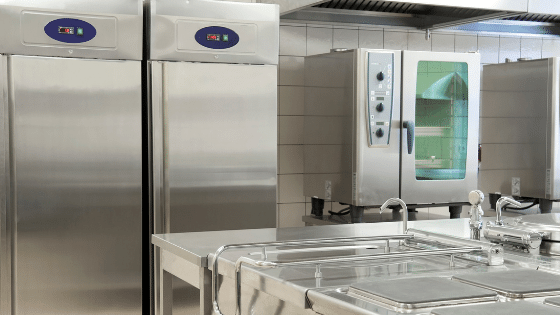Kloeckner Metals stocks 201/201LN stainless steel plate, an austenitic steel that shows an increase in yield and tensile strength as the temperatures decreases.

In the annealed condition, this austenitic steel is non-magnetic, but can become magnetic when cold worked. It demonstrates excellent toughness at lower temperatures as its strength increases. It can be fabricated by bench, roll forming, and bending. Though this stainless steel is weldable, it shows the poorest quality welds with greater risk for intergranular corrosion. It is not hardenable by heat treatment.
This steel grade is used in a number of industries, including food service, automotive, architecture, and others.
Because 201LN stainless steel was specifically designed to provide austenite stability for service at low temperatures, it is often used for applications like pressure vessels, cryogenic, structural, architectural, magnetic and heat resisting components. 201 stainless is more often seen in restaurant equipment, cooking utensils, sinks, automotive trim, and various architectural applications.
It is machinable.
It is weldable. However, in certain environments this austenitic stainless grade is at risk for cracking at weld joints and sensitization on mechanical properties. Welding with common fusion and resistance methods are recommended for best results.
It is not heat treatable.
In the annealed condition, this austenitic steel is non-magnetic, but can become magnetic when cold worked. It demonstrates excellent toughness at lower temperatures as its strength increases. It can be fabricated by bench, roll forming, and bending. Though this stainless steel is weldable, it shows the poorest quality welds with greater risk for intergranular corrosion. It is not hardenable by heat treatment.
This steel grade is used in a number of industries, including food service, automotive, architecture, and others.
Because 201LN stainless steel was specifically designed to provide austenite stability for service at low temperatures, it is often used for applications like pressure vessels, cryogenic, structural, architectural, magnetic and heat resisting components. 201 stainless is more often seen in restaurant equipment, cooking utensils, sinks, automotive trim, and various architectural applications.
It is machinable.
It is weldable. However, in certain environments this austenitic stainless grade is at risk for cracking at weld joints and sensitization on mechanical properties. Welding with common fusion and resistance methods are recommended for best results.
It is not heat treatable.

201/201LN stainless steel plate is an austenitic steel. Its primary alloying elements are chromium, nickel, and magnesium. It shows excellent toughness at lower temperatures and is purposed across industries for use in appliances, restaurant equipment, sinks, automotive trim, and more.
ANSWER:
201LN stainless steel was specifically designed for service at lower temperatures. The chemical composition varies slightly to accentuate mechanical properties like toughness and resistance to impact loading, which are critical factors at low temperatures.
ANSWER:
Austenitic stainless steel is one of the five classes of stainless steels. The other classes of stainless steel are: ferritic, martensitic, duplex and precipitation hardened. These classes are determined by their crystalline structures.
ANSWER:
It is recommended to anneal 201 stainless at 1,850 – 1,950°F (1,010 – 1,066°C). Then, water quench or rapidly air cool.
ANSWER:
201LN stainless steel was specifically designed for service at lower temperatures. The chemical composition varies slightly to accentuate mechanical properties like toughness and resistance to impact loading, which are critical factors at low temperatures.
ANSWER:
Austenitic stainless steel is one of the five classes of stainless steels. The other classes of stainless steel are: ferritic, martensitic, duplex and precipitation hardened. These classes are determined by their crystalline structures.
ANSWER:
It is recommended to anneal 201 stainless at 1,850 – 1,950°F (1,010 – 1,066°C). Then, water quench or rapidly air cool.

X
The Kloeckner Metals website uses modern technologies. Unfortunately, your browser doesn't support those technologies.
Download the latest version of one of these browsers to experience the site: